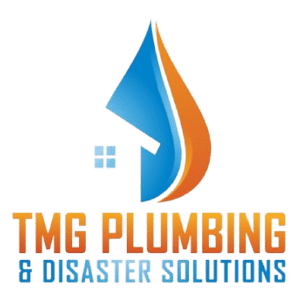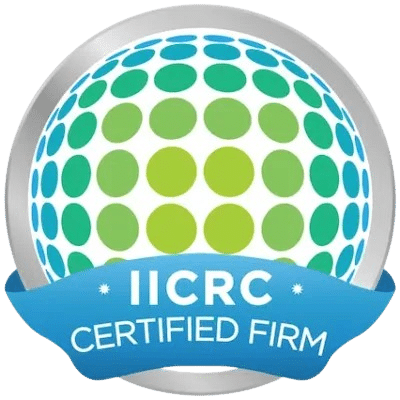As winter approaches, homeowners face one of the most costly and preventable disasters: frozen and burst pipes. When temperatures plummet, the water inside your pipes can freeze, expand, and cause devastating damage that can cost thousands of dollars in repairs. The good news is that with proper preparation and the right knowledge, you can protect your home’s plumbing system from winter’s harsh effects.
Understanding the Risk: Why Pipes Freeze
Frozen pipes typically occur when temperatures drop below 20°F, though freezing can happen at higher temperatures if you have uninsulated pipes running through unheated spaces. The pipes most vulnerable to freezing include those exposed to severe cold conditions, such as outdoor hose bibs, swimming pool supply lines, and water sprinkler systems. Additionally, water supply pipes in unheated interior areas like basements, crawl spaces, attics, and garages are at high risk.
When water freezes inside pipes, it expands and creates pressure from within, potentially causing cracks or complete pipe bursts. According to the Insurance Institute for Business and Home Safety, burst pipes can easily result in water damage costs of $5,000 or more.
Essential Prevention Strategies
Temperature Control and Heating
The foundation of pipe protection starts with maintaining consistent indoor temperatures. Keep your thermostat set to the same temperature both during the day and at night. During cold weather, maintain home thermostats above 55 degrees to ensure adequate warmth reaches your plumbing system.
If you’re planning to travel during winter months, never turn off your heating system completely. Leave the heat on in your home to maintain a safe temperature for your pipes. This small expense in heating costs is minimal compared to the potential damage from frozen pipes.
Strategic Water Flow Management
One of the most effective prevention methods involves keeping water moving through your pipes. Allow cold water to drip from faucets served by exposed pipes, particularly the faucet farthest from your main valve. Even a small trickle of running water helps prevent pipes from freezing because moving water is much less likely to freeze than stagnant water.
Insulation and Physical Protection
Proper insulation is crucial for protecting vulnerable pipes. Focus on insulating pipes in unheated areas such as basements, attics, garages, and crawl spaces. One of the simplest methods involves wrapping exposed pipes with good insulation materials.
For outdoor protection, cover outdoor faucets and hose bibs with insulating covers or molded-foam hose bib covers, which are readily available at most hardware stores. If these specialized covers aren’t available, you can use newspaper or rags covered with plastic wrap as an alternative.
Interior Access and Ventilation
Open kitchen and bathroom cabinet doors to allow warmer air to circulate around the plumbing fixtures. This simple step helps ensure that heated air from your home reaches pipes that might otherwise be isolated in cold cabinet spaces. However, when opening cabinets, be sure to move any harmful cleaners and household chemicals out of reach of children.
Close garage doors if there are water supply lines running through the garage, and close vents to crawl spaces to protect pipes from cold air infiltration.
Outdoor Plumbing Preparation
Disconnecting and Draining
Before freezing weather arrives, disconnect all hoses from outdoor faucets. This prevents water from remaining in the connection points where it could freeze and cause damage.
If your home has a separate outdoor water shutoff valve, turn off water to outdoor faucets before temperatures drop. After shutting off the water supply, open each outdoor spigot to drain any remaining water from the lines. Keep the outside valve open so that any water remaining in the pipe can expand without causing a break.
What to Do If Pipes Freeze
Initial Assessment
If you turn on a faucet and only a trickle comes out, you likely have a frozen pipe. Before taking action, check with neighbors to see if they’re experiencing similar issues. If they also have water loss, the problem might be a main line break rather than frozen pipes in your home.
Safe Thawing Methods
If you’ve confirmed that your pipes are frozen, turn on the affected faucet before beginning the thawing process. As you heat the frozen pipe and the ice begins to melt, you want water to be able to flow through the system.
Apply heat to the frozen section using safe methods such as an electric heating pad wrapped around the pipe, an electric hair dryer, or towels soaked in hot water. You can also use a portable space heater, but keep it away from flammable materials.
Never use dangerous heating methods such as blowtorches, kerosene heaters, propane heaters, charcoal stoves, or any device with an open flame. These high-heat sources can damage pipes or start fires.
Continue applying heat until full water pressure is restored, and check all other faucets in your home to identify any additional frozen pipes.
When to Call Professionals
If you cannot locate the frozen area, if the frozen section is not accessible, or if you’re unable to thaw the pipe safely, contact a licensed plumber immediately. Additionally, if you suspect a pipe has already burst, turn off the water at the main shutoff valve and seek professional help right away.
For homeowners searching for “plumbing services near me”, it’s wise to establish a relationship with a trusted local plumbing company before winter arrives. Having contact information readily available can save precious time during an emergency.
Emergency Preparedness
Know Your Shutoff Valve
Every homeowner should know the location of their main water shutoff valve and how to operate it. This valve is typically located at the water meter or where the main line enters your house. In an emergency situation involving burst pipes, quickly shutting off the main water supply can prevent extensive water damage to your home.
Professional Maintenance
Consider scheduling a pre-winter plumbing inspection with qualified plumbing services near you to identify potential vulnerabilities in your system. Professional plumbers can assess your home’s specific risk factors and recommend targeted solutions for your property’s unique needs.
Conclusion
Protecting your home’s plumbing system from winter weather requires proactive planning and consistent attention to detail. By maintaining proper temperatures, ensuring adequate insulation, managing water flow, and preparing outdoor fixtures, you can significantly reduce the risk of costly pipe damage.
Remember that the small expenses associated with prevention—such as increased heating costs, insulation materials, and professional inspections—are minimal compared to the thousands of dollars in potential damage from burst pipes. Take action before the first freeze to ensure your home’s plumbing system remains functional throughout the winter months.
At TMG Companies, we understand the importance of protecting your home’s vital systems. By following these comprehensive winter preparation strategies, you can enjoy peace of mind knowing that your plumbing is ready to withstand whatever winter weather brings your way.




